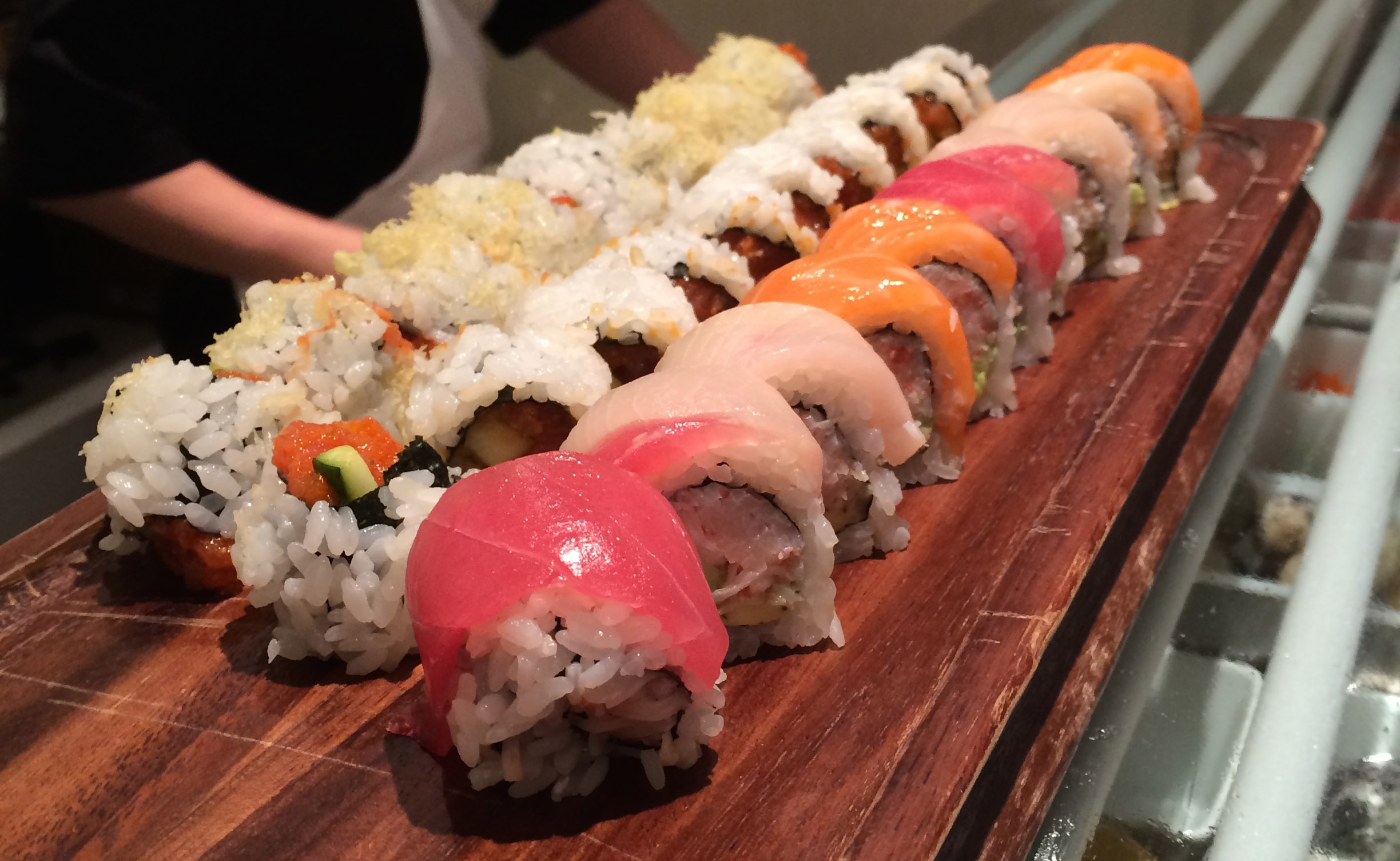Fact: Dallas taste buds have a hankering for fishy rolls, Japanese cooking and rounds of sake bombs. I am no exception to this statement. With years of Sushi Saturday under my belt, I felt it was time to put my rolling skills to the test, so this past week I ventured to Lounge 31 where Sushi Steve and his “superhero sidekick” led me through Sushi 101 boot camp. Though I will save you (and my dignity) from the complete rundown of my experience (short version: I was a bad student), I will share with you a handful of things I learned, along with key tips from Sushi Steve to make your own rolls at home.

From the type of fish to the cut of meat to the spectrum of ingredients there is a lot going on in one small roll. What’s the difference between sushi and sashimi? Sushi refers to slices of raw fish mixed with, laid over or wrapped in sushi rice; whereas, sashimi is just the raw fish sliced thinly on its own. Wait. What the hell is sushi rice? According to Sushi Steve, it’s a combination of white, short-grained Japanese rice cooked with rice vinegar, sugar, salt and, on occasions, sake. The way to cook it is one part rice, 0.8 parts water and a bit of sugar. After it cooks, let it sit for about 10 minutes before adding the proper amount of rice vinegar, or else it will form one gooey, gummy mess. When it comes to rice vinegar, you can buy the store kind, but you won’t get that same beachy flavor unless you have dried seaweed lying around to distill your vinegar with.
It’s all about the fish.
We used three different types of tuna for our rolls: blue fin, bigeye and yellow fin. Blue fin is pink in color, the most expensive and rare to find in store. Bigeye only grow to be 100 lb. and don’t contain a large amount of fat. Yellow fin, light in color, is the most popular one of the three. When it comes to fat, the skin is actually the fattiest part of the tuna.
One of the most interesting things I learned was that even if you catch one hundred fish with the same size, same weight and all from the same area, each will have its own distinct taste.

Americans don’t understand sushi.
Sushi is one of those cultural dishes America adopted as its own and twisted all sorts of ways. First of all, just in case you didn’t realize this, we are the only ones with a California roll. Weird right? Guess there’s not a California, Japan that started that one. Second, we have adapted so much to factory-produced meats and imitation fish such as crab (Krab) that we expect those flavors. Restaurants have come to use this Krab not necessarily by choice, but more to please the customer’s palette. Ugh, America.
Koreans are behind the roll.
Many rolls are actually Korean-based rather than from Japan or China. In Japan they don’t have spicy tuna rolls. Actually, they don’t even really like spicy. Sorry folks, don’t expect Sriracha in Japan. Sushi Steve likes his ahi tuna bowl-style with seaweed, sesame oil, wasabi and a mountain of masago. So like the Japanese version of a Chipotle burrito bowl?
I will never be a Sushi Steve.
Sushi Steve studied sushi for 15 years, and it shows. My plate was referred to as the “corndog roll” from start to finish – it was a bit of a class joke. First, I put way too much rice. Then, I stuffed it with way too much ahi tuna. After that, I couldn’t wrap my head around how to exactly close my overflowing contents to mirror the perfectly sealed roll of my companion. It’s that American appetite I guess. Subsequently through many ughs, no!s and stop!s, Sushi Steve just walked away with a faint “It looks good.” You’re a liar, Sushi Steve. It looked awful. I will say that even though my presentation was off, I still ate my entire roll within seconds.
Verdict: I should stick to my seat on the other side of Sushi Steve’s bar and let him do all the work, while I sip on my sake lemonade.

Sushi Secrets from Sushi Steve
• Buy your fish at Central Market for the freshest cuts and best prices
• Distill dried seaweed in your rice vinegar to give it more of an ocean taste
• Use a spoon to filet the tuna when making ahi tuna chop.
• Put sesame oil or water on your hands and the rolling surface to prevent the rice from sticking.
• Put the soft ingredients in the very inside and don’t overfill so it will close properly and not ooze out the sides (I definitely didn’t abide by this one).
• Use a seesaw-type motion when cutting your roll. Don’t chop down on it or everything will come out the sides (Once again, I did this, and it was bad).
• Don’t be shy with your toppings. Pile on the eel sauce, wasabi mayo, spicy mayo, ponzu sauce and roe (fish eggs). Leave some rolls a little bare so you can actually taste the fish, but the more goodies you use, the fewer mistakes in presentation your guests can see.






